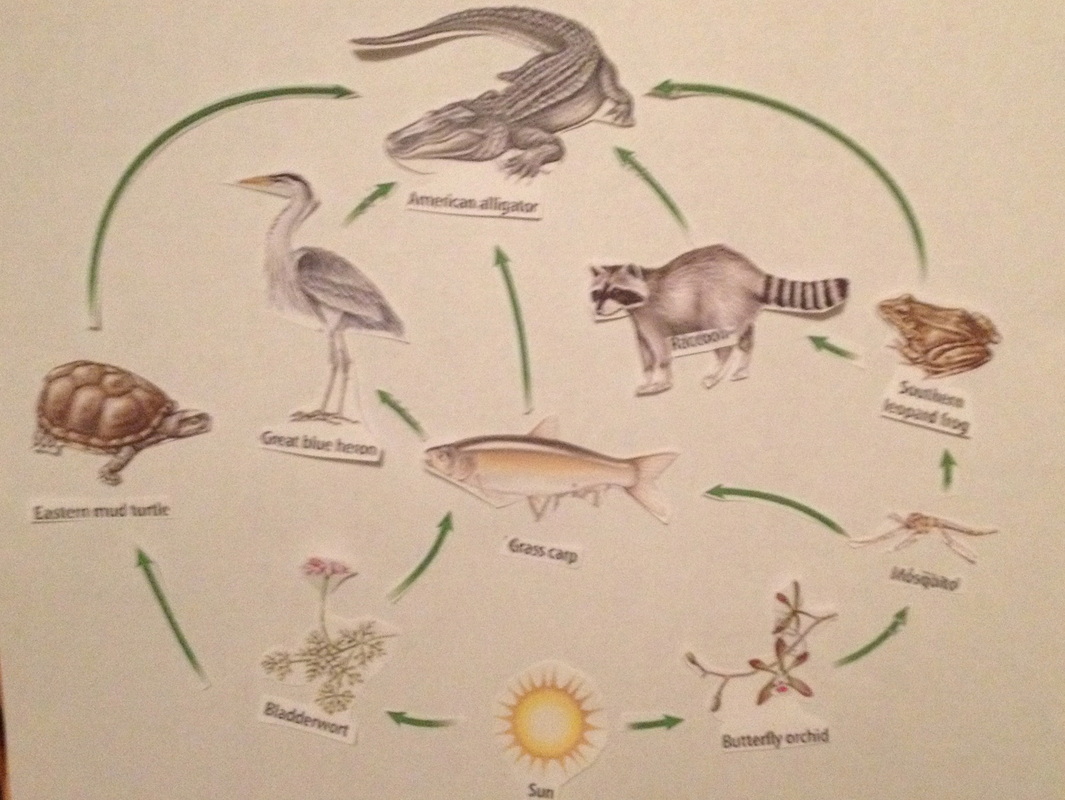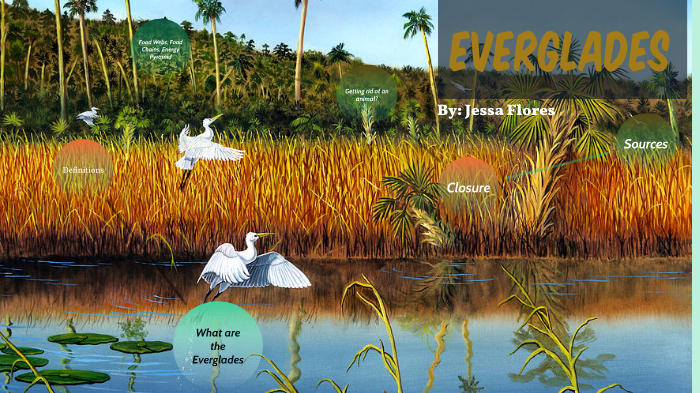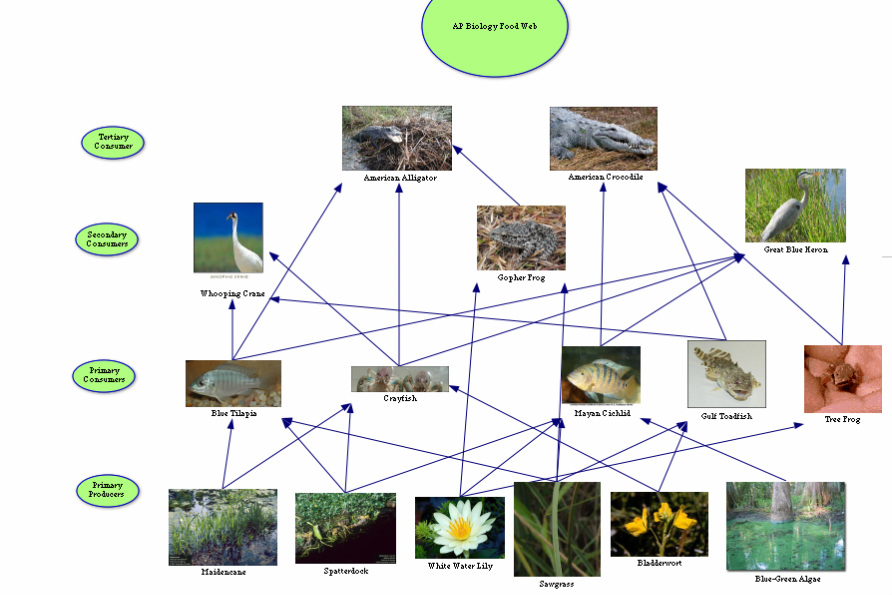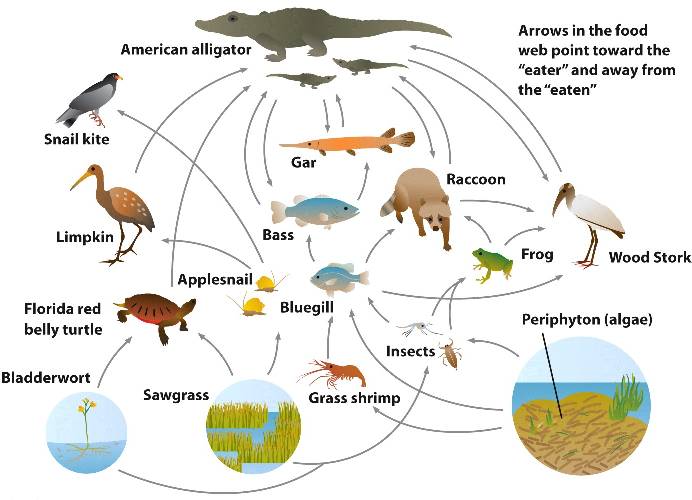How Everything Works Together Biology Diagrams The Everglades food web is an intricate, balanced relationship that allows every living thing in the area to thrive. As with all life on earth, the everglades food web begins with the sun. At the top of the food chain, you guessed it, alligators, panthers, and bears (some of the most endangered species in the Everglades) can sustain their Everglades Food Web Activity from the The Florida Coastal Everglades Long-Term Ecological Research (FCE-LTER) Project https://fcelter.fiu.edu/ develop 4 different food chains and a food web that might be found in the Everglades ecosystem! Everglades Ecosystem Plant Species Sawgrass; Red mangrove, White mangrove, Unlike a simple food chain, which follows a single path, a food web shows an ecosystem's many overlapping food chains. This helps us understand how energy flows from one organism to another and how they all depend on each other to survive. In the Everglades, the food web includes plants, herbivores, carnivores, omnivores, decomposers, and

A food chain can illustrate the complexity of the feeding relationships between all plants and animals in an ecosystem. True False In an ecosystem, all plants and animals rely on one another for survival. And there are still thousands of Everglades plants and animals we haven't yet included in, let's face it, our very simple food web.

PDF Everglades Food Web Activity Biology Diagrams
A food chain is a great way to illustrate the flow of energy and matter through an ecosystem. In this video, we'll put together a typical Everglades food cha The primary consumers in the Everglades food web are herbivores that feed on plants and other primary producers. These include: Apple snails: A critical food source for several species, including the endangered snail kite.; White-tailed deer: These large herbivores feed on the grasses, leaves, and shrubs of the Everglades.; Manatees: Known as "sea cows," manatees graze on aquatic plants

Today we'll create a typical Everglades food chain, but the story actually begins about 93 million miles from South Florida. The sun is like an enormous nuclear reactor, radiating its rays across the solar system. Without the sun's energy, there would be no life on Earth. Without the sun, there would be no plants…the first link in our Everglades Food Web. Using the term food web instead of food chain emphasizes the multiple trophic pathways of real life. Larval amphibians, for example, (tadpoles or pollywogs) are mostly herbivores but are also known for cannibalism. Oxygen is a waste product of the photosynthetic process. Each of the food chain steps is called a trophic The Everglades, a massive subtropical wetlands located in the southern portion of the state, is perhaps the most renowned of Florida's wetlands. Whether you're navigating the labyrinthine system of waterways on an airboat or observing from a safe distance, the wetlands offer a glimpse into a thriving ecosystem that supports a complex food chain.
